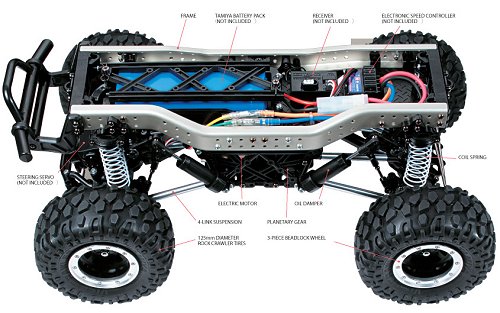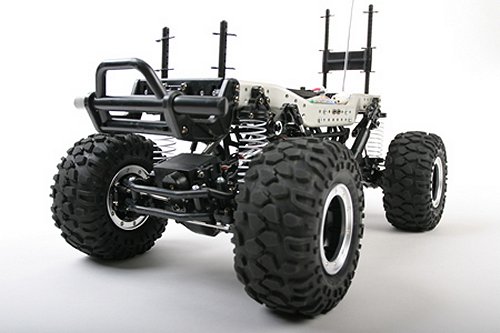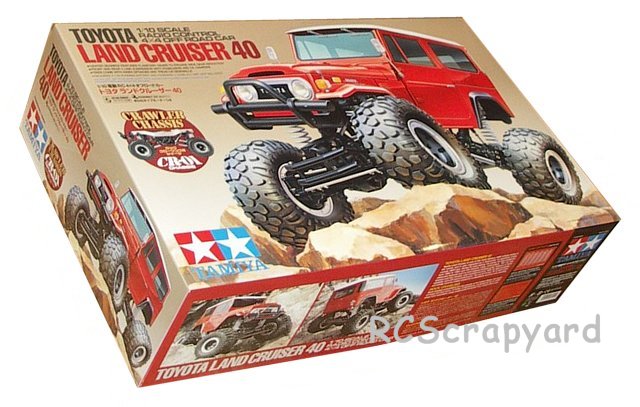

|
|
|


|
Tamiya Toyota Land Cruiser 40 - 58405 (Radio Controlled Model Review)1/10 Scale Electric Rock Crawler - CR-01 Chassis:
Released by Tamiya on April 23, 2008, the Toyota Land Cruiser 40 was the first Tamiya model based on the 4WD CR-01 Rock Crawler Chassis.
▼ Scroll Down for More Images ▼
Rating: 4.5
|








|
|
|

|
|
Tamiya Toyota Land Cruiser 40 #58405 CR-01 - Chassis
 |
|
Tamiya Toyota Land Cruiser 40 #58405 CR-01 - Chassis
 |
Buying a Used Tamiya Rock Crawler (and What to look for)
Make a General Visual Inspection
Check the Body-Shell
If the body shell of your Rock Crawler is broken, ripped or damaged in any way, this can be easily repaired with rubber solution glue. Also, for added protection and if available for your model, fit an under guard to stop dirt and gravel entering the chassis. Drive Shafts and Turnbuckles
Examine the Drive System
The gearbox of your used Rock Crawler should be opened up to check for damaged gears and wear. If there is excessive backlash in the gearing, these should be replaced. A thin coat of grease on the gears is enough to allow smooth operation and reduce further wear. Pinions and Spur Gears
Steering Servo and Servo-Saver
Don't Forget those Bearings
|









|






|
|
|

|
Hints, Tips and Information
For Those New to RC
|
|
Hints, Tips and Information
Rubber Tires for RC Models
Rubber Tires ALWAYS should have either soft sponge or rubber inserts. They will not function as they should without them. And if you are totally serious about your racing they should be glued to the rims. How to Mount Rubber Tires onto Wheels/Rims.
Before mounting your Tires, I would recommend talking to the more experienced racers at your local club, concerning what inserts they use. Even the top level racers rely on a bit of local knowledge on tracks they have never raced before. |
|
RC Models:
|
Radio & Motors: |
Other
Accessories: |